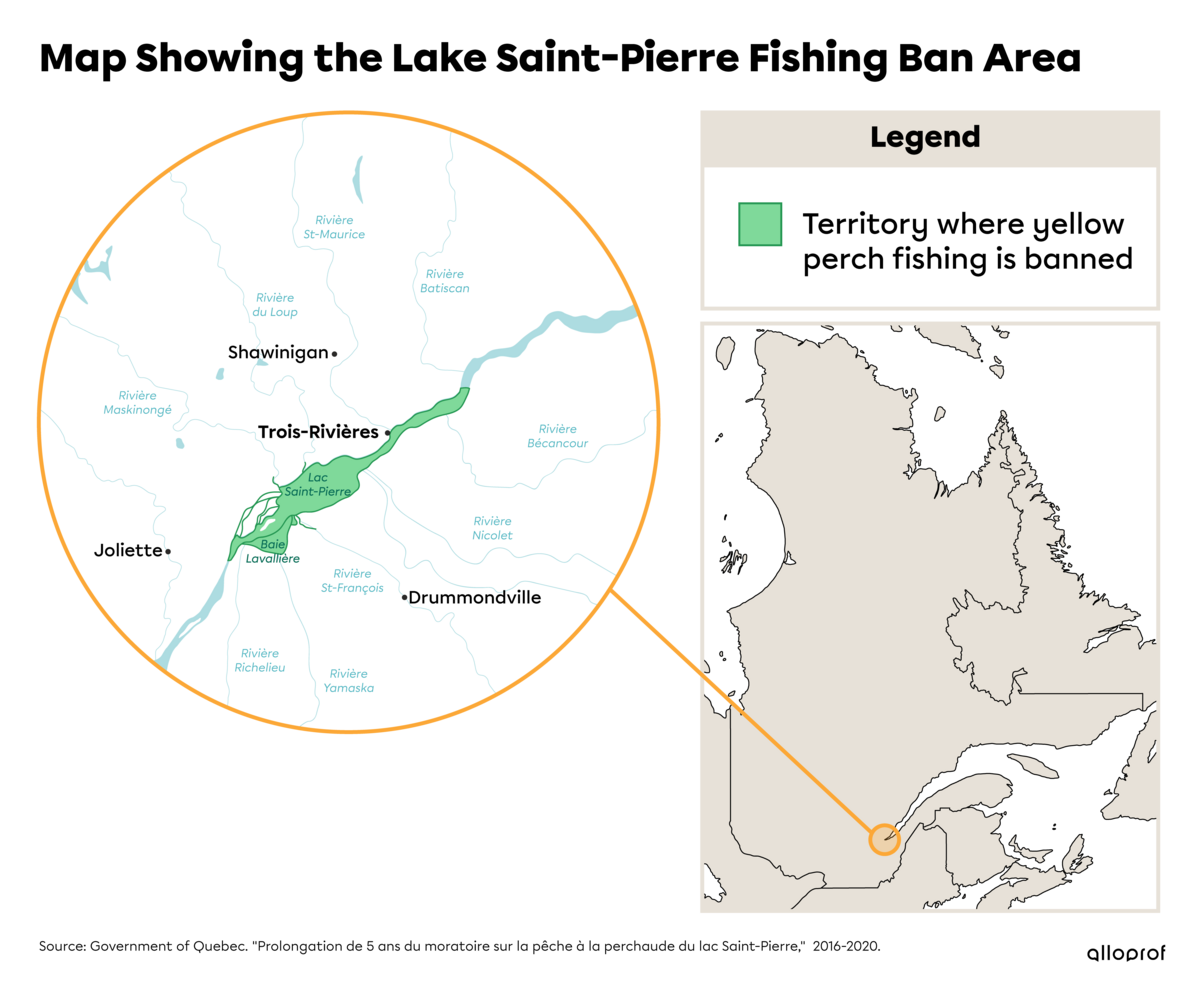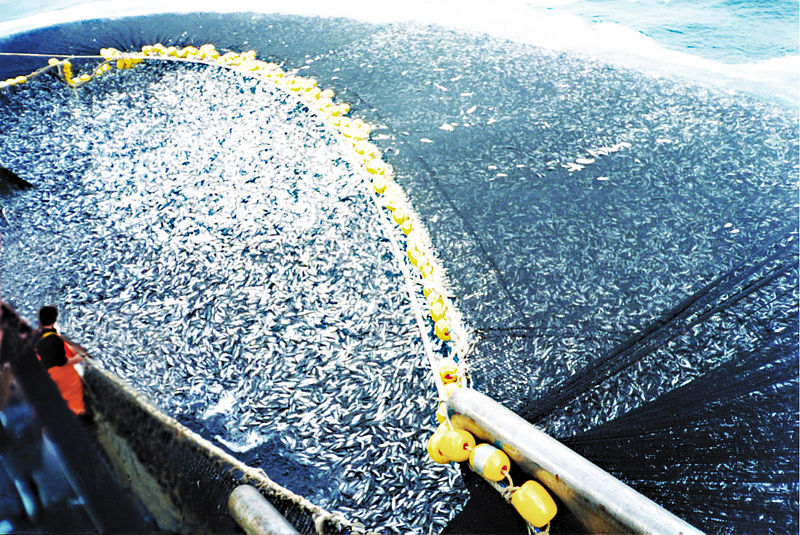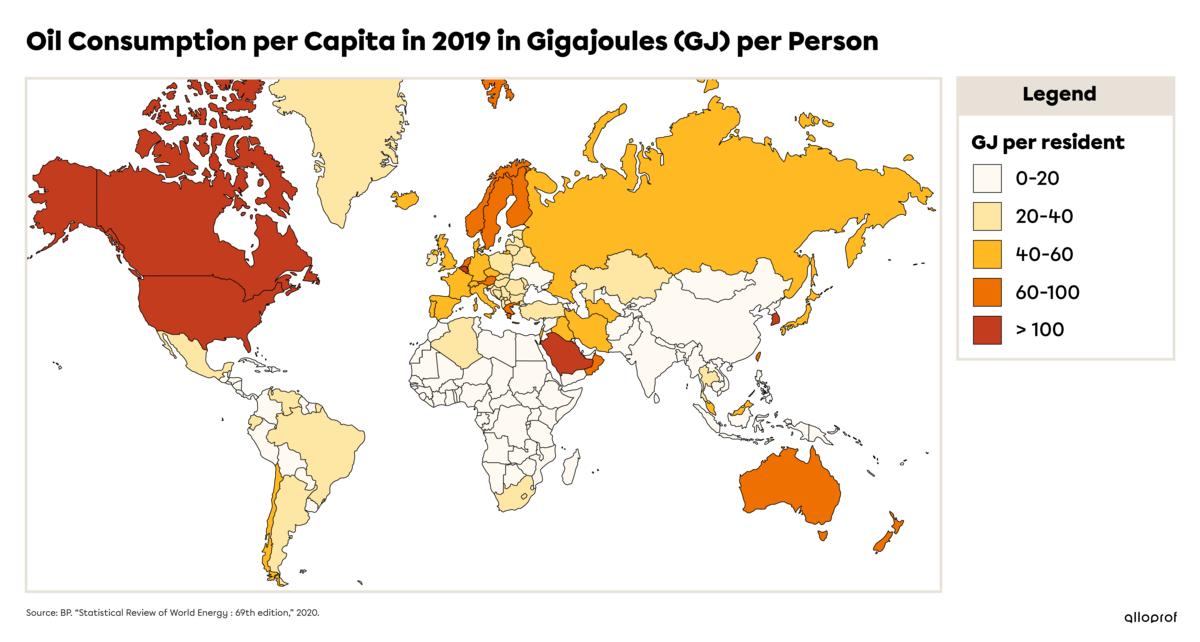Today, as the world’s population approaches 8 billion, the exploitation of the planet’s natural resources has reached the point that these resources cannot be renewed. The ecological footprint of humans is too high. Resources could be depleted if the situation doesn’t change.
The ecological footprint measures the area of land or water required for an individual, company or country to support their way of life or activities. It includes all the resources consumed to meet the person’s needs and dispose of the waste generated.
Nearly a billion people eat fish as part of their diet. However, the fishing industry has been depopulating the oceans for decades. The growing demand for fish in developed countries has led to overfishing and water pollution. Several species of fish have been overfished, including salmon, tuna, herring and cod, and fishing bans have been decreed to protect these species. Some species are on the brink of extinction, such as the Pacific sardine and the bluefin tuna. A 2005 Food and Agriculture Organization (FAO) report states that almost 80% of fish species are being overfished. Catches have been falling for several years, indicating that the resource is further declining.
In 2012, the Government of Quebec enacted a complete fishing ban on both commercial and recreational fishing of yellow perch in Lake Saint-Pierre. This ban was intended to last five years to protect this fish species that had been declining for over 10 years. The ban was successful, and the yellow perch population increased significantly in the lake. However, the population didn’t increase enough to protect the species. It’s still fragile and if fishing resumes, it could still have disastrous effects on the species.
In 2017, despite the ban reaching its initial expiry, the government chose to extend it for an additional five years, until 2022.

Developed countries have huge fishing vessels that are capable of catching fish from far away and factory ships that can process and freeze more than 250 000 kilos of fish per day on site.

Source: Chilean purse seine [Photograph], Ortiz Rojas, C., 1997, Wikimedia, (URL). CC0 1.0.
As with other resources on the planet, freshwater consumption is constantly increasing. Growing demand is leading to fears of resource depletion. In 50 years, the amount of freshwater available for each person has been cut in half. This trend is expected to continue until 2025 with more than 3 billion people affected by water scarcity, according to several experts.
The United Nations (UN) defines the minimum threshold of freshwater available per person as 1700 cubic metres. Water scarcity exists below this threshold, meaning that the demand for water exceeds the amount available, leading to a drinking water shortage. A drinking water shortage is detrimental to people’s way of life as well as agriculture.
-
As the world’s population grows, so does the need for drinking water. In 2008, it was estimated that more than 880 million people lacked access to safe drinking water. In 2017, UNICEF reported that 2.1 billion people lacked access to drinking water in their homes.
-
Water is used extensively in agriculture, specifically for irrigation. To feed the entire population, land would have to be more productive, which will put more pressure on the resource.
Currently, there is about 30 million km² of cultivable land on Earth, equal to 5.8% of the planet’s total surface area. However, there has been a noticeable decrease in the quality and size of cultivable land. Two major issues are soil erosion and mismanagement. In certain areas, even though people know better than to overexploit the land, their vulnerable situation forces them to keep exploiting their land as much as possible, since their income depends on it. In addition to erosion and mismanagement, desertification, urbanization and soil salinization, often caused by irrigation, also reduce agricultural land.
Urbanization is when the population moves to the city.
Some experts believe that deforestation began during prehistoric times and continues to this day, especially in developing countries. A forested area the size of the United Kingdom disappears each year. South America is most affected by deforestation. Deforestation has several causes, including:
-
forestry development
-
subsistence farming
-
livestock farming
-
permanent agriculture
The main cause of deforestation is subsistence farming. In developing countries, where the population is growing fastest, wood is used as fuel as well as building material. Deforestation also increases the amount of land available to people for cultivation.

Source: Hillside deforestation in Rio de Janeiro [Photograph], Brazil, A., 2009, Wikimedia, (URL). CC0 1.0.
Reducing forests obviously has serious effects on the environment. It directly threatens the survival of several hundred plant and animal species, as their habitat is destroyed or changed.
Palm oil is the most widely used vegetable oil on the planet and is found in a large number of food products in grocery stores, as well as in some cosmetics. It’s also one of the main causes of deforestation, as entire forests are cleared to be replaced by oil palm fields. Between 2000 and 2012, some 60 000 km² of forest in Indonesia were cleared for planting. This is equal to about 11 204 football fields, or slightly bigger than the size of Croatia.
This has disastrous effects on biodiversity, since planting a single species of plant reduces plant diversity and endangers several animal species, such as orangutans, whose habitat is destroyed.
To find out more, watch this video: Palm Oil's Environmental Impact: Can it Be Grown Sustainably?

Source: Alex East, Shutterstock.com
As the population, consumption and industrialization increase, so does the use of fossil fuels.
Fossil fuels are non-renewable energy sources that come mainly from hydrocarbons (oil, natural gas, coal, etc.).
The three main fossil fuels are oil, coal and natural gas, which account for 80% of energy consumption. These are the three most widely used energy sources in the world.
Unfortunately, they are non-renewable and damage the environment. They are among the main causes of greenhouse gas (GHG) production, which contribute to climate change.
Most people use oil in their everyday lives, and not just to power their cars. It’s used to make the many plastic items we use daily. Oil is also used to produce 70% of the synthetic fibres used to manufacture clothing.

Aing, A., Cazamajor, P. et Schnepf, M-O. (2014, April 9). Activités humaines et dégradation des terres. Institut de recherche pour le développement. http://www.cartographie.ird.fr/degra_PB.html
Brazil, A. (2009). Hillside deforestation in Rio de Janeiro [Photograph]. Wikimedia. https://commons.wikimedia.org/wiki/File:Hillside_deforestation_in_Rio_de_Janeiro.jpg
Futura planète. (n.d.). L'empreinte écologique. https://www.futura-sciences.com/planete/definitions/developpement-durable-empreinte-ecologique-2585/
Ortiz Rojas, C. (1997). Chilean purse seine [Photograph]. Wikimedia. https://commons.wikimedia.org/wiki/File:Chilean_purse_seine.jpg
Portalis, C. (2008, January). L'homme, un danger pour la planète?. linternaute. http://www.linternaute.com/science/environnement/dossier/danger-de-l-homme/